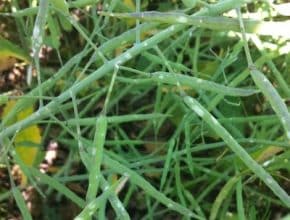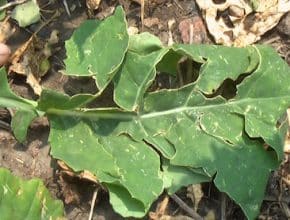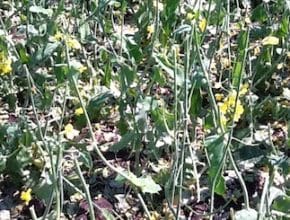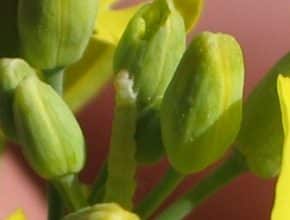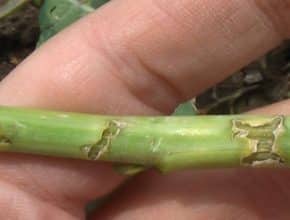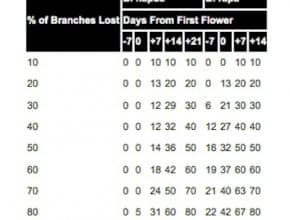Hail can cause seeds inside pods to bruise. This bruising can also cause pods to shatter prematurely, although the shatter tendency depends on the extent of hail. If only a few bruises, shatter loss should be minimal. However, if bruising occurs on more than 25-30% of the pod, and the spots turn white or brown, shattering is likely to occur…
Hail
-
-
We had a “follow up question” to last week's article "Hail damage: Economic loss depends on cro stage." The grower was asking about foliar nutrition after a hail storm. He had 2” of rain a week after a hailstorm and he feels that a foliar application could be worthwhile. The hail hit canola at the 5-6 leaf stage with a…
-
Nutrient and fungicide top dress treatments have been promoted to help heal and restart canola after hail. We don’t have published studies on using these or any treatments for this purpose in Western Canada, so it’s buyer beware. Leave a check strip to see if they improved yield. For products that require foliar uptake to work properly, severe hail damage…
-
Heat — Foliar boron applied at flowering has been tested on canola in Ontario to as a way to prevent blossom blast during summer heat waves. Four years of grower field studies from 2008-11 found inconclusive results. Hail — Nutrient and fungicide top dress treatments have also been promoted to help heal and restart canola after hail. We don't have…
-
-
Before trying any treatment on hail damaged fields, give the crop time to recover. It may recover nicely on its own, likely with later maturity but with a large percentage of its yield potential intact. Or, if the growing points or most of the leaves are stripped off, the plants may not recover sufficiently to warrant further investment in the…
-
Canola hit with light to moderate hail at up to 20% flower may recover with only minimal to moderate yield loss. Plants will flower longer and compensate. More severe damage warrants a call to the insurance adjuster…
-
-
A number of hail storms in Alberta earlier in the season have resulted in regrowth at the top of the plant. This regrowth is now considerably late and it is……

